
By Boran Zaza, Director of Communications & Development at Orchestras Canada.
I’m not going to lie: I am a big fan of AI, and of all the ways it has streamlined my workflow as a one-person Communications and Development Department. From tailoring social media copy for different platforms to extracting complex donor data from spreadsheets, AI has made my work easier and more efficient! (Did I use AI to write this blog post from scratch? No. Did I use it to proofread and develop a couple of sections using my notes from the conference? Absolutely!)
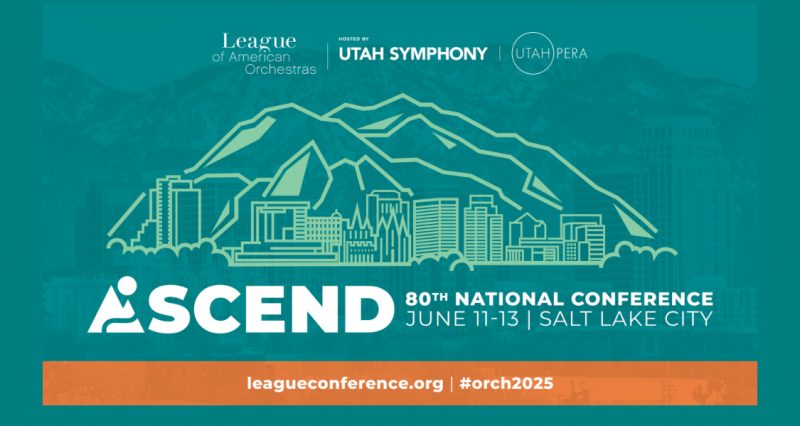 I used to think I was a pretty good prompt writer—and I believe this skill will become increasingly vital in the near future—until I attended a session led by Capacity Interactive at Ascend, the League of American Orchestras’ 80th National Conference. The conference took place from June 10-13, 2025, in Salt Lake City, Utah.
I used to think I was a pretty good prompt writer—and I believe this skill will become increasingly vital in the near future—until I attended a session led by Capacity Interactive at Ascend, the League of American Orchestras’ 80th National Conference. The conference took place from June 10-13, 2025, in Salt Lake City, Utah.
Ethics in AI?
Jen Taylor and Dan Titmuss from Capacity Interactive made a compelling case for using AI as a strategic tool—not just to save time but to build thoughtful, human-centred strategies. Here are my key takeaways and reflections from their presentation:
AI use should be human-centred and ethically grounded
It’s fine to use AI to adapt existing social media copy for different platforms. But creating art—like a concert poster in the style of Picasso? That’s a no-go. AI should augment human work, not replace artists or staff members. Also, AI can be biased; it might default to certain personas, tones, images, or assumptions about your audience. Always double-check, fact-check, and revise AI-generated outputs.
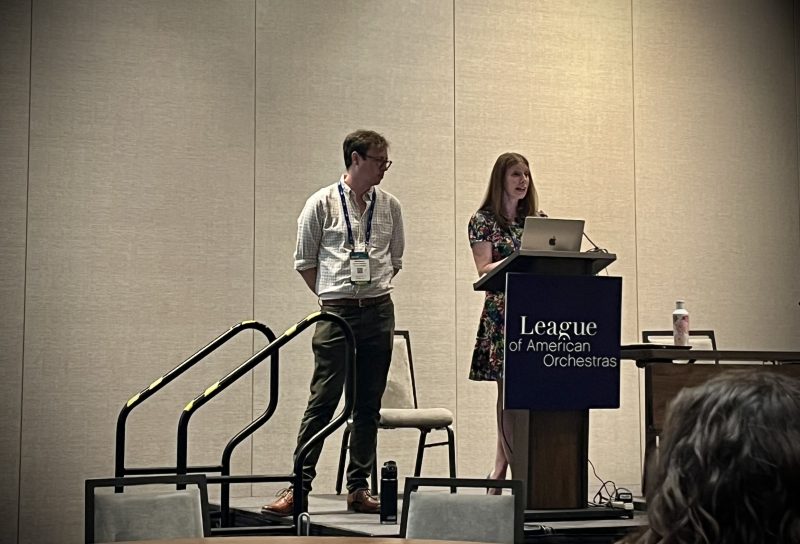
 Consider the environmental impact of AI
Consider the environmental impact of AI
Every interaction with AI involves processing the entire conversation, which consumes energy and contributes to pollution. Planning detailed prompts in advance helps reduce unnecessary back-and-forth, lowering AI’s environmental footprint.
Use AI to build strategy, not just tactics
AI can perform landscape analyses, develop positioning strategies, or create cross-promotion plans. For example, with the Deep Research functionality in Google Gemini, you can craft research papers referencing specific websites—such as local orchestra sites—and get comprehensive insights that inform your decision-making. Remember: always fact-check when using AI!
For more on this, check out Capacity Interactive’s slide deck here: AI for Strategy, Not Just Tactics.
Engaging Audiences Digitally
Another fascinating session at the conference featured Orchestras Canada’s long-time friend, Alan Brown of WolfBrown. Entitled Engaging Future Audiences in a Digital World, the session was moderated by John Kieser, Co-Founder of JDJK Consulting, with Jennifer Barton (Baltimore Symphony Orchestra), Alan Brown, and Wolfgang Graf (Easy Connect).
This session addressed how current and future audiences are evolving and engaging with the arts. Today, people cherry-pick from various entertainment and leisure activities, and the online landscape has shifted dramatically. Mobile devices are now the primary platform for digital interaction, with users leveraging apps to organize their lives, socialize, and discover events. Orchestras must meet audiences where they are—on their smartphones and apps—to bring them into the concert hall.
Insights from Alan Brown – Social Context and Social Value
Alan emphasized that social dynamics greatly influence attendance. For example:
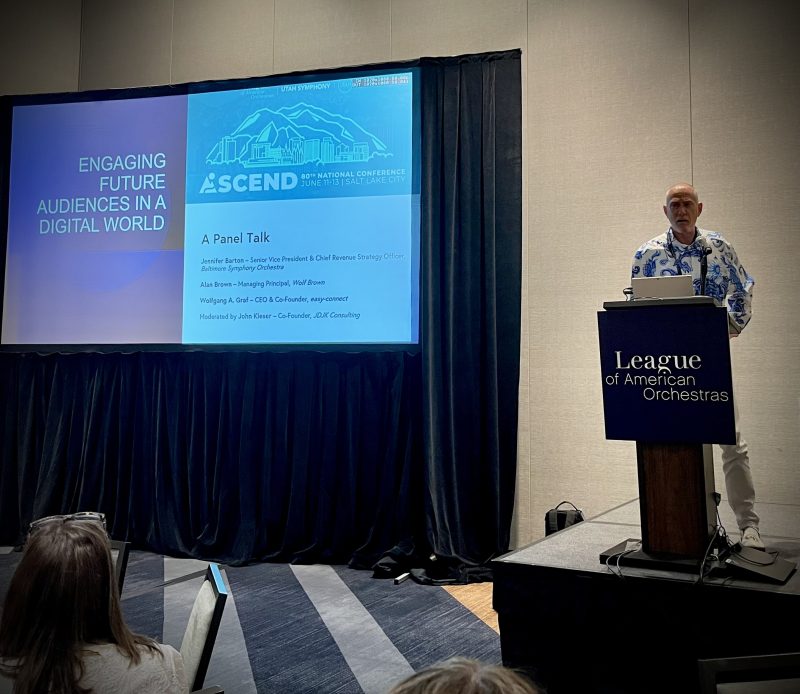
- An invitation from a friend can unlock a significant portion of demand.
- The decision-making process for purchasing a ticket is much easier for ticket buyers who are in a relationship.
- Research shows that “Social initiators”—people who love organizing outings—constitute about 18% of ticket buyers. They are the catalysts that drive attendance through their networks. The challenge? These initiators are often not tagged in our databases, so we don’t know how to engage them directly.
- Brown’s research also shows that the majority under age 65 have at least some experience using apps to purchase tickets, so there is an opportunity for our sector to embrace mobile app technology fully.
Apps for Engagement
Wolfgang Graf from Easy Connect shared that:
- People spend about four hours daily on their smartphones, with 90% of that time spent on apps.
- App engagement rates are nearly three times higher than for the mobile web.
- Push notifications outperform emails in capturing attention.
- An astounding 98% of individuals trust recommendations from friends and family more than any advertisement.
To capitalize on these trends, organizations should consider developing digital tools that combine event discovery and ticketing while providing interactive, personalized experiences—such as gamification and community features. He referenced Berlin’s ClassicCard app as one successful example.
And there you have it: Whether it’s using AI thoughtfully to shape our strategies or meeting audiences on their phones and social feeds, there’s a lot of exciting potential ahead. The key is balancing innovation with a human touch, and I can’t wait to see where these digital trends take us next!
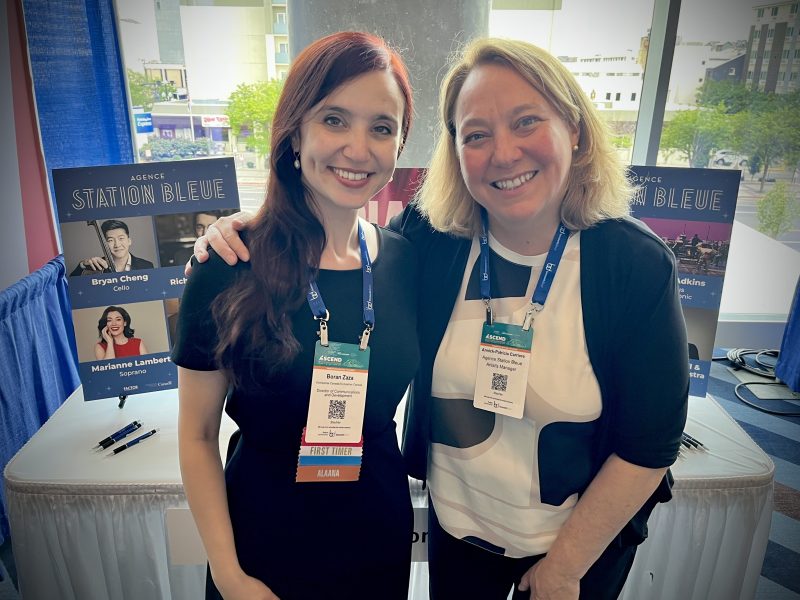
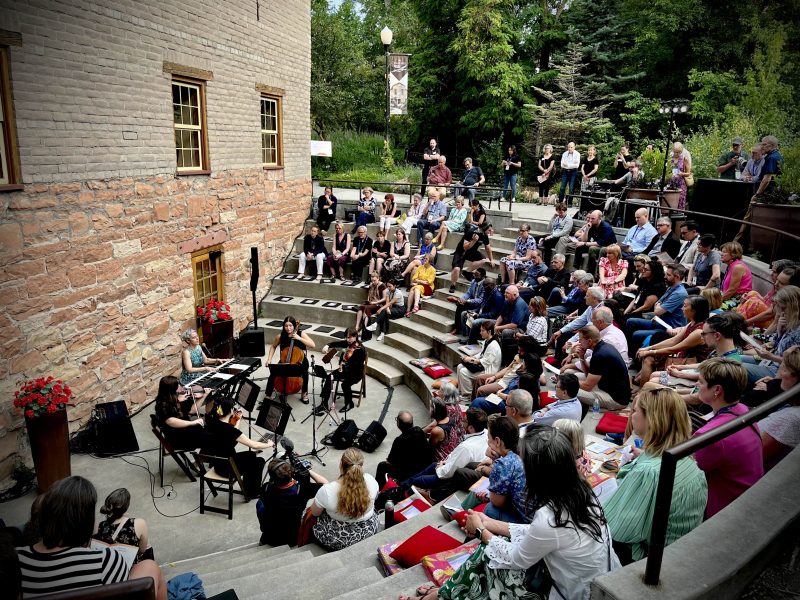
To get a taste of the League of American Orchestras conference experience in video format, check out the Instagram stories I posted while in Salt Lake City! I am deeply grateful for the generous funding from the Canada Council for the Arts through the Supporting Artistic Practice: Professional Development for Arts Professionals program that made my attendance at Ascend possible. Stay tuned for the next blog post!
We acknowledge the support of the Canada Council for the Arts.




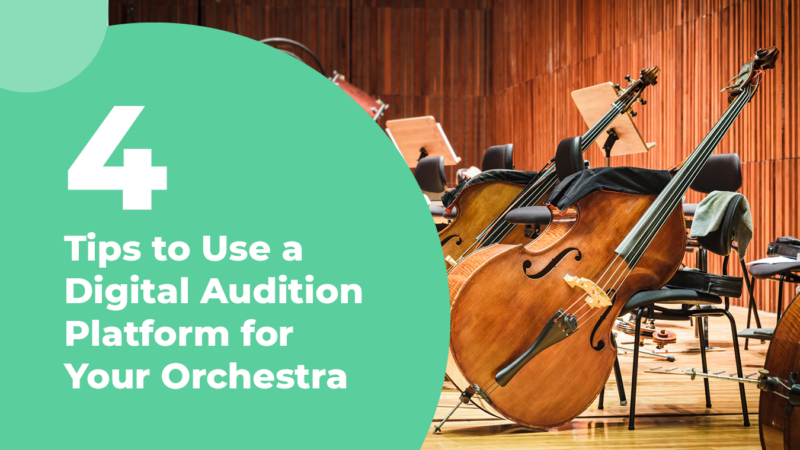
 *Jerry Tsai is the President of Acceptd, a Togetherwork company that is the premier recruitment, application, and audition platform for the arts. He is passionate about serving the arts community and loves that art is a way to wind down and enjoy all that life has to offer.
*Jerry Tsai is the President of Acceptd, a Togetherwork company that is the premier recruitment, application, and audition platform for the arts. He is passionate about serving the arts community and loves that art is a way to wind down and enjoy all that life has to offer. 





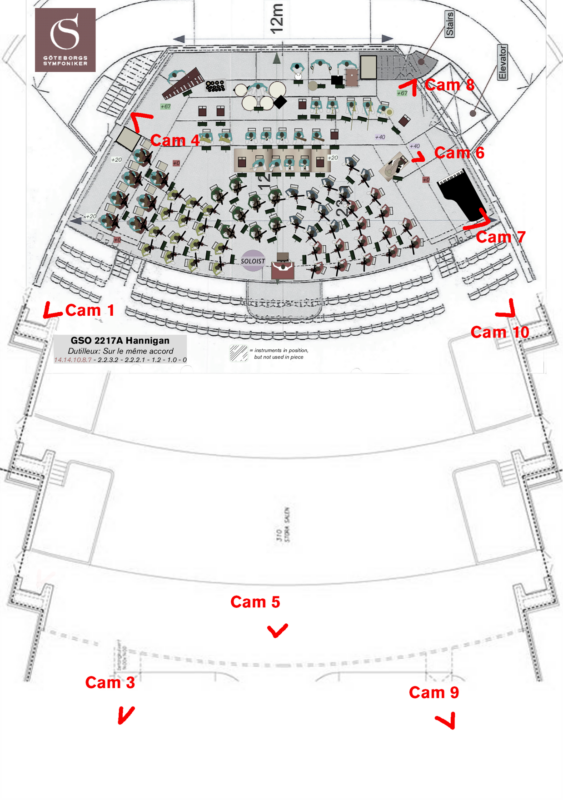

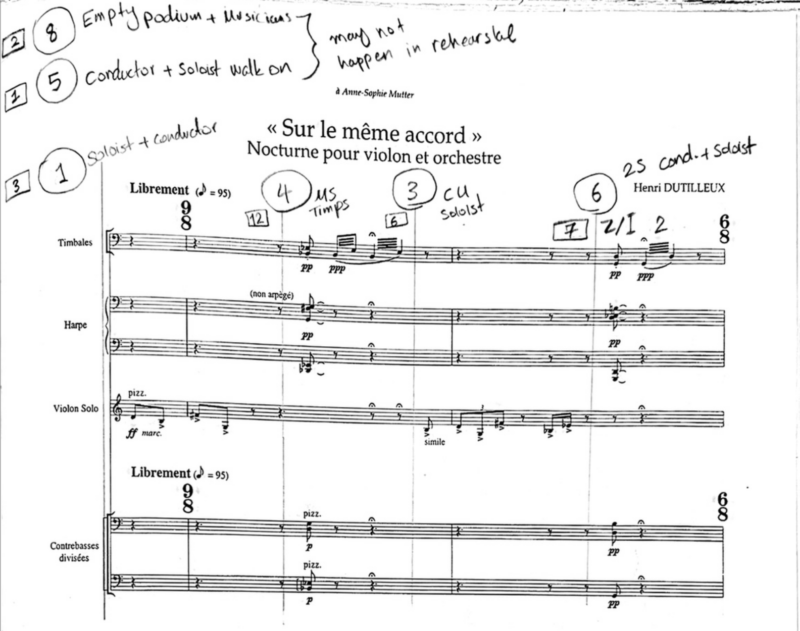





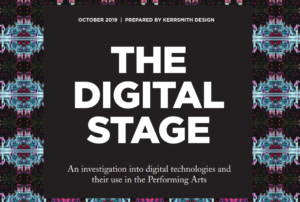
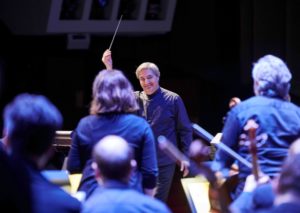

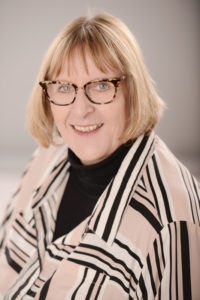 The word Digital invokes a wide spectrum of reactions from arts administrators, from screams of delight to… just screams. Whether capital ‘D’ digital is something that is embedded into your organization’s DNA, or just something that you think the staff millennial does, orchestras are engaging with their audiences on digital platforms in ways that are new, exciting, and scary. In preparation for our
The word Digital invokes a wide spectrum of reactions from arts administrators, from screams of delight to… just screams. Whether capital ‘D’ digital is something that is embedded into your organization’s DNA, or just something that you think the staff millennial does, orchestras are engaging with their audiences on digital platforms in ways that are new, exciting, and scary. In preparation for our  Although conversations about integrating digital technologies into our arts organizations are nothing new, the way we speak about it needs to change. “The term Digital is one of those zeitgeist-y terms,” Fiona says. “It’s a disastrous term that makes people feel inadequate. It’s okay not to know what that word means, because it doesn’t really mean anything.” We tend to use the term as a catch-all for being active online, but don’t always know what this looks like. Orchestras want to be digitally active, but it’s not as simple as just livestreaming everything we do. We need to strategically choose what we present online in order to get the most impact from our limited time and money.
Although conversations about integrating digital technologies into our arts organizations are nothing new, the way we speak about it needs to change. “The term Digital is one of those zeitgeist-y terms,” Fiona says. “It’s a disastrous term that makes people feel inadequate. It’s okay not to know what that word means, because it doesn’t really mean anything.” We tend to use the term as a catch-all for being active online, but don’t always know what this looks like. Orchestras want to be digitally active, but it’s not as simple as just livestreaming everything we do. We need to strategically choose what we present online in order to get the most impact from our limited time and money.